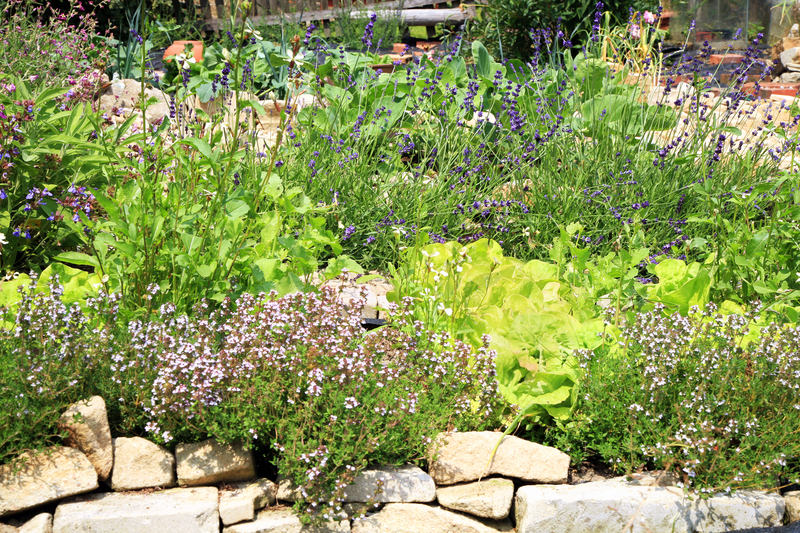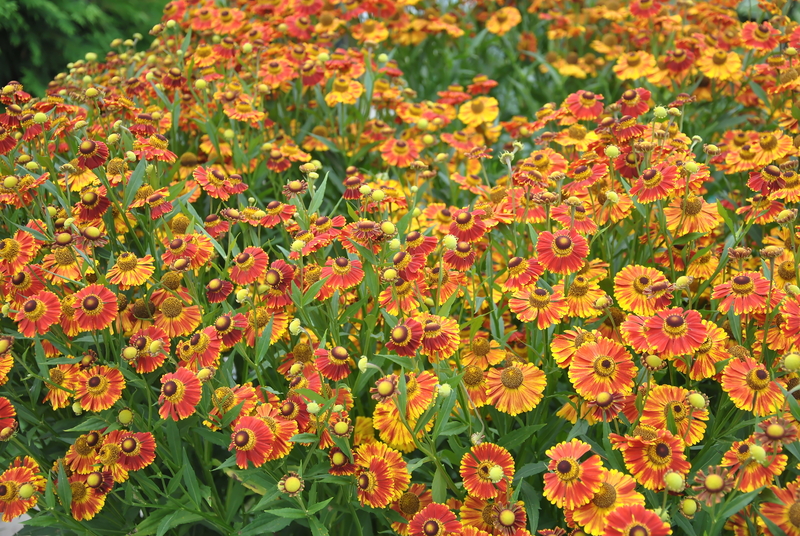Unlock the Magic of Orchids with Expert Care
Posted on 23/09/2025
Unlock the Magic of Orchids with Expert Care
Orchids have long enchanted plant lovers with their breathtaking elegance and exotic charm. Symbolizing beauty, luxury, and strength, these floral wonders add a touch of sophistication to any home or garden setting. Yet, for many, the art of orchid care seems mysterious or intimidating. In truth, bringing out the best in these mesmerizing plants is more attainable than you might imagine. This comprehensive, SEO-optimized guide unveils the secrets to nurturing healthy, vibrant orchids, helping both beginners and seasoned growers unlock the magic of these stunning blooms.

Why Orchid Plants Are Magical
Orchids, belonging to the family Orchidaceae, are one of the most diverse and widespread plant families on earth. With over 28,000 distinct species--and countless hybrids--orchids are renowned for their spectacular shapes, colors, forms, and fragrances. From the ever-popular Phalaenopsis (Moth Orchid) to rare, exotic specimens, these plants never cease to amaze.
But what makes orchids truly magical?
- Long-Lasting Blooms: Many orchids display stunning flowers that can last for several months.
- Unique Adaptations: Orchids thrive in diverse environments, from rainforests and mountains to grasslands and even deserts.
- Fragrant Wonders: Some orchid varieties emit sweet, intoxicating scents that enhance any living space.
- Fascinating Biology: Orchids rely on intricate relationships with pollinators--bees, birds, moths--and even fungi, making their life cycle a marvel of evolution.
Choosing the Right Orchid Variety
Before unlocking the secrets of expert orchid care, selecting the appropriate orchid for your environment is crucial. While all orchids share basic needs, some are more beginner-friendly than others. Here are a few popular choices for various experience levels:
- Phalaenopsis (Moth Orchid): Ideal for beginners with their forgiving nature and abundant blooms.
- Cattleya: Known for their spectacular fragrance and vibrant colors, these are a favorite for intermediate growers.
- Dendrobium: Characterized by long canes and compact flowers, perfect for home display.
- Oncidium (Dancing Lady): These whimsical orchids offer sprays of golden blossoms.
- Paphiopedilum (Lady's Slipper): With unusual pouch-shaped blooms, these do well in lower light conditions.
Pro Tip: Start with a healthy, robust plant from a reputable nursery. Avoid orchids with wilted leaves, wrinkled pseudobulbs, or visible pests.
The Essentials of Orchid Care: Step-By-Step Guide
1. Mastering Orchid Light Requirements
Light is perhaps the most critical factor for successful orchid cultivation. Most orchids, especially popular indoor varieties like Phalaenopsis, do best in bright, indirect sunlight.
- East- or west-facing windows provide morning or late afternoon light without harsh midday rays.
- Sheer curtains or blinds diffuse sunlight, preventing leaf burn.
- If leaves turn dark green, your orchid may need more light. Yellowish-green leaves indicate a healthy balance, while reddish or scorched leaves suggest light is too intense.
Fun Fact: Some orchid species love shade, while others thrive in sun-drenched spots. Learning your orchid's natural habitat can help tailor its care.
2. Watering Orchids the Expert Way
One of the most common mistakes in orchid maintenance is overwatering. Orchids need a specific balance--enough moisture for their roots, but never soggy conditions.
- Water only when the potting medium is almost dry. This may mean once a week, depending on humidity and temperature.
- Use room-temperature, rain, or distilled water. Tap water high in salts or chemicals can damage sensitive roots.
- Water early in the day to allow leaves to dry, preventing fungal issues.
- Let excess water drain away completely. Never let pots sit in standing water!
Tip: *Insert a wooden skewer into the pot; remove it after a few minutes. If it feels damp, wait before watering again.*
3. Selecting the Proper Orchid Potting Mix
Unlike many houseplants, orchids do not grow in soil. Instead, they require a specialized orchid mix that lets their roots breathe.
- Bark chips, sphagnum moss, perlite, charcoal, and coconut husk are common ingredients in quality mixes.
- Phalaenopsis orchids prefer a fine-to-medium bark mix; oncidiums and cattleyas like coarser bark.
- Repot every 1-2 years to prevent compacted media and root rot.
- Always use pots with ample drainage holes.
Did you know? Orchid roots are often green or silver. Exposed roots are normal--don't trim them unless they seem dry or mushy.
4. Temperature and Humidity for Thriving Orchids
Orchids flourish in a range of temperatures, but most household orchids prefer:
- Daytime temperatures: 65-80?F (18-27?C)
- Nighttime temperatures: 55-65?F (13-18?C)
- Humidity levels: 40-60%
Boost indoor humidity with a humidity tray (pebbles and a shallow dish of water), misting, or running a humidifier nearby. Avoid placing orchids in drafty locations or near heat vents.
5. Fertilizing Orchids for Optimal Growth
Feed your orchid with a balanced, gentle fertilizer to encourage stunning blooms and vigorous foliage.
- Use a fertilizer formulated for orchids, preferably 20-20-20 or similar, at half strength.
- Feed "weekly, weakly"--fertilize every other watering during the growing season, and less often during winter rest.
- Flush pots monthly with plain water to prevent salt build-up.
Expert Tip: *Never fertilize a dry orchid. Water first, then feed, to protect delicate roots.*
6. Pruning and Repotting for Lasting Beauty
Keeping your orchid healthy sometimes means timely pruning and repotting. Remove spent flower spikes by trimming just above a visible node--this can stimulate reblooming in some varieties, like Phalaenopsis.
- Repot when the potting mix breaks down, when roots outgrow the container, or every two years as a rule of thumb.
- Trim dead, shriveled, or blackened roots with sterile scissors.
- Always use clean pots and fresh mix to reduce the risk of pests and diseases.
Common Orchid Challenges and Solutions
Despite your best efforts, orchid care can present a few hurdles. Recognizing symptoms and taking prompt action keeps your orchids thriving.
Orchid Won't Bloom?
- Insufficient light is the most frequent cause--move to a brighter spot.
- Temperature drops at night can trigger flowering in many species.
- Ensure regular feeding, rest periods, and no recent shock from repotting.
Yellowing Leaves?
- One or two older leaves yellowing at the base is normal shedding.
- Widespread yellowing may indicate overwatering, pests, or excess salts. Adjust care as needed.
Pests and Diseases
- Look out for mealybugs, spider mites, and aphids under leaves and around roots. Treat promptly with insecticidal soap or neem oil.
- Prevent fungal issues with good airflow and careful watering. Remove infected growth immediately.
The Joyful Rewards of Expert Orchid Care
When you nurture orchids with attentive yet gentle care, they will grace your home with unrivaled beauty--often blooming year after year with increasing splendor. More than just floral decoration, growing orchids becomes a rewarding hobby that sharpens your skills and connects you with the astonishing diversity of nature.
Benefits of Orchid Cultivation
- Stress Relief: Tending to orchids can be calm and meditative, lowering anxiety.
- Enhanced Indoor Environment: Orchids purify air and add a serene, tropical ambiance.
- Educational Value: Learning about orchid species fosters curiosity about botany, ecology, and the natural world.
- Community: Orchid growing is a global passion. Share tips, attend shows, or join local societies to connect with fellow enthusiasts.

Advanced Tips for Truly Magical Orchids
Ready to take your orchid growing to the next level? Consider these advanced techniques:
- Experiment with Hybrid Varieties: Many hybrids are bred for resilience and unique traits--join the fun of collecting new cultivars.
- DIY Pollination: With patience, you can cross-pollinate orchids for custom blooms--an endeavor for the seasoned hobbyist!
- Display in Creative Ways: Mount orchids on wood, in glass terrariums, or hanging baskets to showcase their natural beauty.
- Track Growth: Maintain a gardener's journal, noting bloom times, feeding schedules, and successful techniques.
A Final Word: Unlock the Magic of Orchids Today
With a blend of patience and knowledge, caring for orchids transforms from bewildering to blissful. Whether you're drawn by their alluring blooms, captivating fragrances, or fascinating botanical quirks, orchids will reward you with years of magic and wonder.
Ready to unlock the magic of orchids in your own space? Embrace the art of expert orchid care, and watch as your collection flourishes, delighting your senses and uplifting your spirit. For even more detailed tips on specific orchid varieties and troubleshooting, return often to trusted online resources and local orchid societies--your passport to the enchanting world of orchids!
Frequently Asked Questions
- How often should I water my orchid? Most orchids need water about once a week, but always check the dryness of the potting medium first.
- Can orchids rebloom? Yes! With proper care, especially after resting periods, many orchids--particularly Phalaenopsis--rebloom multiple times a year.
- Do orchids need special soil? Orchids require a bark- or moss-based mix, never regular houseplant soil.
- How do I know if my orchid is getting enough light? Look for bright, yet soft, indirect sunlight and healthy, medium green leaves.
Let the magic of orchids bloom in your care--start your rewarding journey today!

